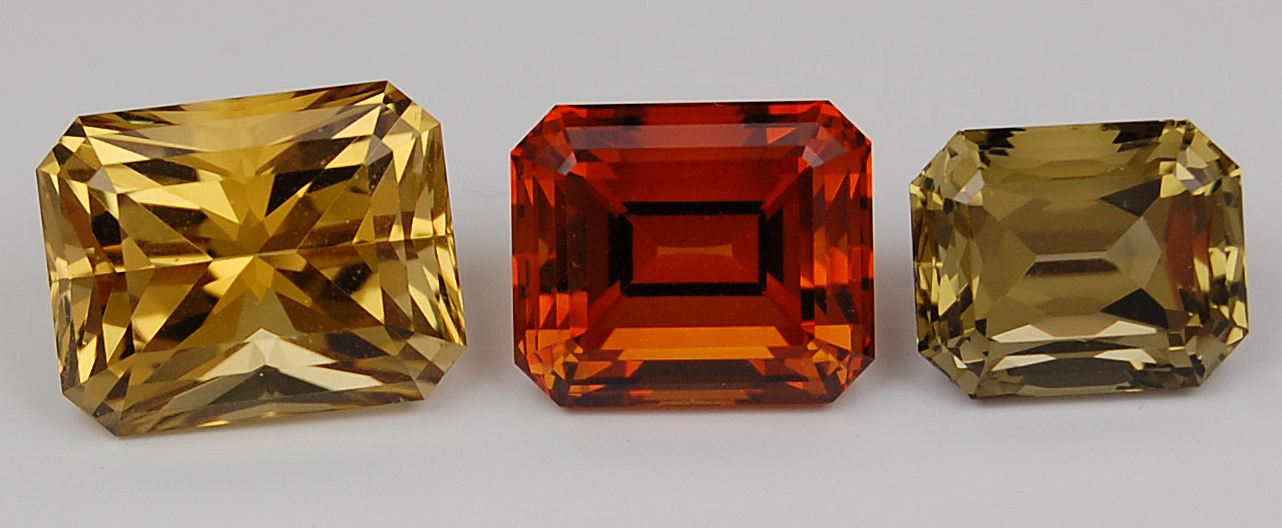
Introduction: Citrine is a variety of quartz. Pictured above from left to right is a 11.95 ct unheated citrine from Tanzania, a 9.47 ct orange (Madeira color) citrine from Brazil and a 6.67 ct brownish-yellow citrine from Ukraine.
Colors: yellow to orange with varying amounts of brown secondary color.
Clarity: Citrine is of Type I clarity. By definition, gems of this type grow extremely clean in nature and usually have no eye visible inclusions. Color zoning can sometimes be seen. Common inclusions found within citrine gems are fluid inclusions, negative crystals, goethite and rutile.
Stone Sizes: Citrines are known in the thousands of carats including a 2258 ct gem from Brazil housed at the Smithsonian. Typical sizes used in jewelry rarely exceed 25 carats.
Localities: Some of the better known localities for citrine are:
-Brazil: probably the main source of citrine from the states of Minas Gerais and Rio Grande do Sul.
-Bolivia, Tanzania, Madagascar
Treatments:
-Heating (H) amethyst from some localities may yield in yellow to yellowish-brown citrine. The treatment is undetectable and the stability is excellent.
Gemology:
-Refractive Index: 1.544-1.553
-Birefringence: 0.009
-Optic Character: Doubly refractive, uniaxial positive
-Dispersion: 0.013
-Specific Gravity: 2.66 (+0.03,-0.02)
-Hardness: 7
-Toughness: good
-Chemical Composition: SiO2
--Cause of Color: Iron
-Absorption Spectra: Not diagnostic.
-Fluorescence: Usually inert
-Cleavage: None
-Phenomena: None
Name: Citrine is in allusion to the color, citron.
Dates: Citrine is an alternate birthstone for the month of November and the 13th anniversary gemstone.
Care: The ultrasonic is usually safe but the steam cleaner is risky. Warm, soapy water is always safe.
To see available citrines, click here.
